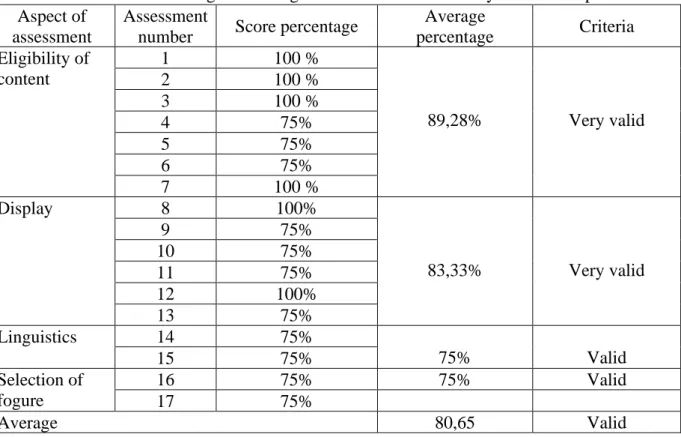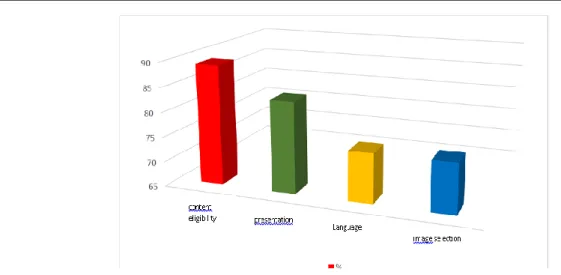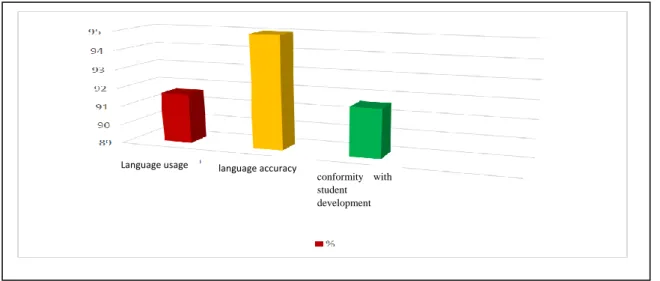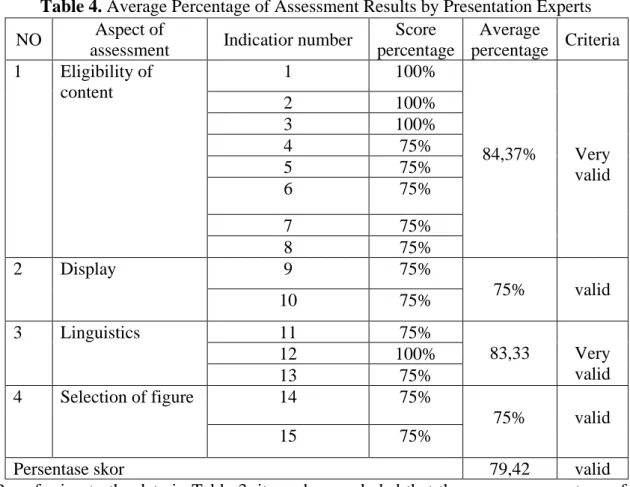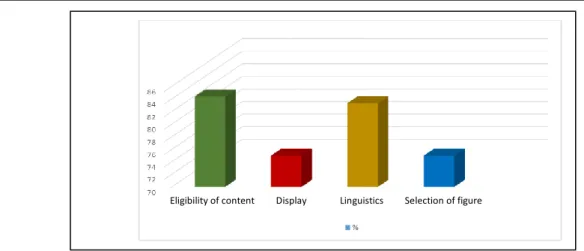377
_______________________________________________________
DOI: https://doi.org/10.33258/birle.v3i1.826
Nonformal Education Based on Higher Order Thinking Skills on
The Subject of Tasks and Population Goals of Non Formal
Education
Yusnadi1, Rosdiana2, Anifah3
1,2,3Lecturer of Nonformal Education
yusnadi1961@gmail.com
I. Introduction
Education plays an important role in preparing human resources for the development of a nation. Human resources are closely related to the education index. Based on data from the Education For All (EFA) Global Monitoring Report in 2011 issued by UNESCO, Indonesia's education development index is ranked 69th out of 127. One reason for the low learning achievement is due to the still poor learning process in Indonesia. In the learning process, students are less encouraged to develop thinking skills (Permanasari, 2013). Though the ability to think at a higher level is a very important aspect in the teaching and learning process.
Education is required to produce graduates who have high-level thinking skills, which are characterized by the ability to think critically, analytically, and creatively. High-level thinking is the ability to connect, manipulate, and transform the knowledge and experience already possessed to think critically and creatively in an effort to determine decisions and solve problems in new situations. Higher-order thinking skills include analytical, evaluation and creative abilities (Rofiah, 2013). This is because high-level thinking ability influences students' ability to learn and the effectiveness of learning so that learning objectives can be Abstract
This research aims at generating: (1) the procedure of teaching material development (handbook) for the principles of nonformal education based on higher order thinking skills on the subject of population and education goals non formal education, and (2) the teaching materials for the principle of nonformal education based on higher order thinking skills on the Subject of Population and education goals that was valid to be used in learning process. With this purpose, the research was conducted using research and development methods. This research was held for 3 months at the Faculty of Education, Medan State University. The data was collected through a survey that was constructed by the appraisement of teaching materials for the principles of nonformal education based on higher order thinking skills from validator experts, language experts, instructional experts and students. The data was analyzed using descriptive-quantitative approach. The results of this research were (1) the procedure of teaching material development for the principles of nonformal education based on higher order thinking skills were valid to be used, and (2) The teaching materials of the principles of nonformal education were valid to be used in learning process for the subject of the principles of nonformal education.
Keywords
378
_______________________________________________________
DOI: https://doi.org/10.33258/birle.v3i1.826
achieved. Research conducted by Heong, et al said that the ability to think at a higher level has a positive influence in developing students' ability to solve problems (Heong, 2011).
Because of the importance of high-level thinking skills for students, efforts are needed to achieve them. The efforts are meant between through the selection and use of appropriate learning models to train students in higher-order thinking. Or also through packaging teaching materials that are oriented to the development of higher-order thinking skills. Several studies have shown that higher-order thinking skills in the medium category can be improved by using problem-based learning models (Susanti, 2015). Likewise, efforts to package teaching materials or literature based on higher order thinking will be able to improve students' higher level thinking skills (Lewy, 2009).
With reference to the demands of high-level thinking skills in learning, the Faculty of Education since 2018/2019 has used the Indonesia National Qualification Framework Based Curriculum (KKNI) and has now been integrated with the Industrial Revolution 4.0. This curriculum requires all lectures to be able to support the realization of higher-level thinking skills, including learning materials used in the PLS Fundamentals course. But it has been found that teaching materials in the form of textbooks that are used are not yet based on higher-order thinking skills. Teaching materials do not bring active, creative, and innovative students, instead they only condition students to be more passive, tend to listen, memorize and record lecture material, and even only expect to receive a copy of power point from the lecturer. In terms of lecturers, lecturers are still dominant compared to students in the learning process, consequently learning still tends to develop memory and memorization. Students are still experimenting a little in the learning process so that the development of higher-order thinking skills cannot take place optimally.
The learning material that is characterized as described does not appear to be inherent in the Basic Fundamentals of Non-School Education, even though this subject is a compulsory subject for all first semester students within the Faculty of Education. Learning often takes place centered on educators, students still often learn individually, activities are still low, and the learning model used is still not appropriate, meaning that learning is not oriented towards higher-order thinking skills (Eko, 2018). Teaching materials should be oriented towards the realization of manipulation skills, and change the knowledge and experience students have and are critical and creative in determining decisions to solve problems in new situations (Husna, 2018). By developing higher-order thinking skills to students, students will be able to use their knowledge and skills to solve problems in their lives critically. This condition is possible because high-level thinking is a way of thinking that not only remembers and applies but also analytical and creative thinking. In addition to high-level thinking skills in learning is the application of thought processes to complex situations and have many variables. The phenomena and facts found are the basic foundation for an in-depth study of the existence of learning tools, including teaching materials used.
379
_______________________________________________________
DOI: https://doi.org/10.33258/birle.v3i1.826
be ascertained that learning is not oriented to higher-order thinking skills (analytical, critical, and creative and able to provide conclusions or problem solving) (Eko, 2018).
If teaching materials are not based on higher-order thinking skills, it can lead to the unpreparedness of graduates to overcome various problems that arise in life, because of the degree to which they are unskilled in analyzing, evaluating and creating and solving various problems that occur. It is this background that underlies that teaching materials must be guaranteed their feasibility to produce graduates who are capable of analyzing, critical, and creative.
II. Research Methods
The study was designed using the Research & Development (R&D) method. R&D is a process used to develop and validate educational products (Putra, 2015). In this research and development, the product to be developed is teaching material for tasks and targets of the education population nonformal education". The development of teaching materials for the basics of High School Education based on higher order thinking skills is carried out using research and development methods that refer to the Borg and Gall model combined with the learning development model used by Dick & Carey (Setyosari) 2010. It was concluded that, the stages used consisted of four stages. The first stage of analysis, which consists of analyzing the needs and characteristics of students. The second stage is design and design, which consists of writing a text for teaching materials based on higher order thinking skills. The third stage of development, which consists of validating the material team, linguists, and instructional experts. The Fourth Stage is product trials, which consist of individual trials of 3 people, small group trials of 9 people, and limited field trials of 30 people. To analyze the results of data validation of teaching materials is done in quantitative descriptive, by looking at the assessment of the feasibility of teaching materials from the results of the study. The quality of the feasibility of developing teaching materials that are developed can be seen from the evaluation of the expert team's validators on teaching materials. Material expert validators, linguists and presentation experts provided answers to the question statements. The questionnaire was arranged in the form of a Likert scale with a score of 1-4, as in Table 1.
Table 1. Teaching Material Feasibility Assessment Standards
Interval Score Eligibility Criteria
3,50 – 4,00 Very eligible
3,00 – 3,49 Eligible without revision
2,50 – 2,99 Eligible with revision
2,00 – 2,49 Less eligible need revision
1,00 – 1,99 Not eligible
Then calculate the percentage score of teaching materials developed using the reference as follows:
P = score percentage f = score achieved N = maximum score
380
_______________________________________________________
DOI: https://doi.org/10.33258/birle.v3i1.826
a. Determine the ideal score (maximum), which is 100%
b. Determine the minimum ideal score percentage, which is 25% c. Determine the range, which is 100% - 25% = 75%
d. Determine the interval class, which is 4 ranges (very valid, valid, less valid, and invalid) e. Determine the length of the interval, i.e. 75: 4 = 18, 75%
III.Discussion
The results of the validation of material experts on teaching materials based on high-level thinking skills developed showed that: (1) the quality of the content worthiness was stated to be very valid, with a percentage of 89.28%; (2) the quality of the presentation is stated to be very valid with a percentage of 83.33%; (3) the quality of language from teaching materials is declared valid with a percentage of 75%. Likewise, the quality of image selection is declared valid with a percentage score of 75%. Then the percentage of results assessed by material experts will be presented in Table 2.
Table 2. Average Percentage of Assessment Results by Material Experts Aspect of
assessment
Assessment
number Score percentage
Average
percentage Criteria
Eligibility of content
1 100 %
89,28% Very valid
2 100 %
3 100 %
4 75%
5 75%
6 75%
7 100 %
Display 8 100%
83,33% Very valid
9 75%
10 75%
11 75%
12 100%
13 75%
Linguistics 14 75%
75% Valid
15 75%
Selection of fogure
16 75% 75% Valid
17 75%
Average 80,65 Valid
381
_______________________________________________________
DOI: https://doi.org/10.33258/birle.v3i1.826
Figure 1. Average Percentage Diagram of Material Expert Assessment Results
With reference to the results of the assessment of the material, there are a number of things that need to be improved, among which there are several concepts from each chapter that need to be revised especially in relation to the development of higher-order thinking skills. Spelling or writing needs to be revised in accordance with the Indonesian spelling, and eliminate illustrations that are not closely related to the scientific aspects of a teaching material. Then, after the revision, the material expert stated that the developed teaching material was appropriate to be used for lectures on the tasks and targets of the education population nonformal education, especially in relation to the development of students' thinking skills. Then the revision was also made with the addition of the Law on National Education System, as well as the improvement of the cover to make it more interesting.
The results of language validation of teaching materials based on higher-order thinking skills developed show that: (1) the use of language is very valid, with a percentage of 91.66%; (2) language accuracy is very valid with a percentage of 95.00%; (3) conformity with the development of students is declared very valid with a percentage of 91, 60%. The details are presented in Table 3.
Table 3. Average Percentage of Language Experts Assessment Results
No Aspect of
assessment
Indicator number
Percentage score
Average percentage
Criteria
1 Linguistics 1 100%
91,66 Very valid
2 100%
3 100%
4 75%
5 75%
6 75%
382
_______________________________________________________
DOI: https://doi.org/10.33258/birle.v3i1.826
language 8 75%
95 Very valid
9 100%
10 100%
11 100%
3 Conformity with student development
12 100%
91,6 Very valid
13 75%
14 100%
Persentase skor 92,75 Very valid
By referring to the results of the assessment of linguists, it appears that teaching materials for tasks and targets of the education population nonformal education -based higher level thinking skills developed are in the very valid category. Thus, from the analysis of these data it can be concluded that the percentage of an average assessment of the aspects of the language of teaching materials developed is very valid with an average score of 92.75%.
Figure 2 shows the average percentage of the results of the linguist's assessment of the language aspects of teaching materials. The basics of PLS-based Higher Level Thinking Skills are developed.
Figure 2. Average Percentage Diagram Results of Linguists' Assessment
There are some things that need to be improved according to the views of linguists regarding the teaching material developed. In terms of sentence structure, it needs improvement, it is required to use standard Indonesian, simplify sentences, writing must be adjusted to the Indonesian Spelling General Guidelines (PUEBI). Then, after the revision was made, according to linguists the teaching material developed could already be used in terms of linguistic aspects.
Language usage language accuracy
383
_______________________________________________________
DOI: https://doi.org/10.33258/birle.v3i1.826
The results of the validation of the presentation or learning expert on teaching materials for the basics of High Level Thinking Based School Education that were developed showed that: (1) in quality, the presentation of teaching material was seen from the feasibility of very valid serving with a percentage of 84, 37%; (2) the quality of the presentation of teaching material is considered valid with a percentage of 75%; (3) the quality of teaching material presentation in terms of language is considered to be very valid with a percentage of 83, 33%; and (4) the quality of the presentation of teaching material as seen from the selection of pictures is also valid with a percentage of 75%. The results of the assessment by the experts presenting the material are presented in Table 3.
Table 4. Average Percentage of Assessment Results by Presentation Experts
NO Aspect of
assessment Indicatior number
Score percentage
Average
percentage Criteria 1 Eligibility of
content
1 100%
84,37% Very
valid
2 100%
3 100%
4 75%
5 75%
6 75%
7 75%
8 75%
2 Display 9 75%
75% valid
10 75%
3 Linguistics 11 75%
83,33 Very
valid
12 100%
13 75%
4 Selection of figure 14 75%
75% valid
15 75%
Persentase skor 79,42 valid
384
_______________________________________________________
DOI: https://doi.org/10.33258/birle.v3i1.826
Figure 3. Diagram of Average Percentage of Assessment Results by Designers (Design)
By referring to Figure 3 the results of the assessment of the learning design by the presentation expert suggest the need for improvement, including: (1) it needs to add the materials tasks and targets of population nonformal education, and (4) clarify HOTS on the material presentation. The results of the corrections to the correction provided by the presentation expert, then the presentation expert stated that the developed teaching material can already be used in the field without having to be revised and valid.
The final product of the development of this research is the teaching material in the form of textbooks that have fulfilled various requirements to develop higher-order thinking skills for the Fundamentals of Basic Education. At the stage of developing teaching materials validation is done by linguists, material experts, presenting experts stating that teaching materials for Basic Education Levels Based on Higher Level Thinking Skills that are developed at the final stage are worth using in the field without having to be revised again.
Teaching materials that are designed based on high-level thinking skills will guide students to have skills in solving problems, and will help students to have the skills to participate in learning, both individually and in groups. This is because teaching materials based on high-level thinking skills train students to find problems critically. With high-level thinking skills-based teaching materials will bring students to get used to in; (1) analyzing, which is related to cognitive processes; and (2) evaluating, which is related to cognitive processes in providing judgment (Yani, 2019). This condition is supported by constructivism learning theory which confirms that students learn to construct their knowledge through interaction with their environment. Learning by using teaching materials based on high-level thinking can actually make students learn through problem solving efforts. Learning with teaching materials based on higher-order thinking skills requires students to actively criticize in solving problems. Teaching materials used in learning like this will be able to form high-level thinking and improve students' ability to think critically (Sani, 2019).
IV. Conclusion
The results of the conclusions of the material validator based on the indicators provided in teaching materials in the form of textbooks Basic Education Education Based on high-level thinking skills with validation carried out twice by each validator, obtained valid results with an average percentage score of 80, 65%. Then proceed with the results of the
385
_______________________________________________________
DOI: https://doi.org/10.33258/birle.v3i1.826
conclusion of the assessment by linguists using three aspects of assessment, namely the use of language, accuracy of language, and suitability of student development the results obtained are very valid, with an average score of 97.75%. Then, as a conclusion from the presentation expert, the results were very valid, with an average score of 79.42%. By referring to 3 validators and after doing two validations as a whole it can be stated that: (1) the design of teaching material development basics for non-school education based on high-level thinking skills is feasible to use, and (2) teaching materials for fundamentals for tasks and targets of the education population nonformal education developed is valid used and meets the eligibility criteria as a learning material based on high-level thinking skills for tasks and targets of the population nonformal education
For supporting lecturers, the teaching material in the form of textbooks that are developed in essence can be used as an alternative teaching material to improve students' high-level thinking skills, especially on the six main topics, namely: nonformal edcucation Concept, noformal education Development in Indonesia, tasks and nonformal Population Targets.
Teaching materials in the form of textbooks The basics of PLS based on high-level thinking skills produced have not been widely applied throughout the first semester students, their spread is still very limited that is only the subject of research students. For this reason, it is recommended to lecturers who are able to implement teaching materials in the form of textbooks in all departments within the FIP UNIMED environment.
References
Eko, Lesmono. 2018. Pengembangan lembar Kerja Siswa Berbasis Masalah untuk Meningkatkan
Heong, Y.M., Widad, Jailani, Razali, T., dan Mohaffyza, M., (2011), The Level of Marzano Higher Order Thinking Skills among Technical Education Students, International Journal of Science and Humanity 1. pp. 121-125 (2011)
Husna. HOTS (High Order Thingking Skills) dan Kaitannya dengan Kemampuan Literasi Matematika. Prisma 1. PP: 170-176 (2018)
Lewy., Zulkardi., dan Aisyah N. Pengembangan Soal Untuk Mengukur Kemampuan Berpikir Tingkat Tinggi Pokok Bahasan Barisan dan Deret Bilangan di Kelas IX Akselerasi SMP Xaverius Maria Palembang. Jurnal Pendidikan Matematika. Volume 3 No.2 Desember 2009.pp 4-6 (2009)
Permanasari, V., Efektivitas Pendekatan Pembelajaran Open-Ended terhadap Kemampuan Berpikir Matematis Siswa pada Materi Trigonometri Ditinjau dari Kreativitas Belajar Matematika Siswa. Jurnal Pendidikan Matematika Solusi, 1(1). pp 1-7 (2013)
Prastowo, A., Panduan Kreatif membuat Bahan Ajar Inovatif. Jakrta: Diva Remaja Rosdakarya. Pp 90 (2011)
Putra, N. Research & Development. Jakarta: RajaGrafindo. pp. 17-19 (2015)
386
_______________________________________________________
DOI: https://doi.org/10.33258/birle.v3i1.826
Sani, R.A. 2019. Pembelajaran Berbasis Higher Order Thingking Skills (HOTS). Jakarta: Bumi Aksara pp (2019)
Setyosari,P. Metode Penelitian Pendidikan dan Pengembangan. Jakarta: Prenada Media Group. pp 199-207 (2010)
Susanti, A.T., Prayitno,B.A., dan Sudarisman,S., Pengaruh Model Problem Based Learninng Disertai Media Key Relation Chart terhadap Kemampuan Berpikir Kritis dan Kerjasama Siswa dalam Kelompok pada Kelas VIII SMP Negeri 14 Surakarta Tahun Pembelajaran 2012/2013, Jurnal Pendidikan Biologi 7. pp. 1-13 (2015)
Trianto. Mendesain Model Pembelajaran Inovatif, Progresif, dan Kontekstual. Jakarta: Prenamedia Group. Pp 73 (2009).
